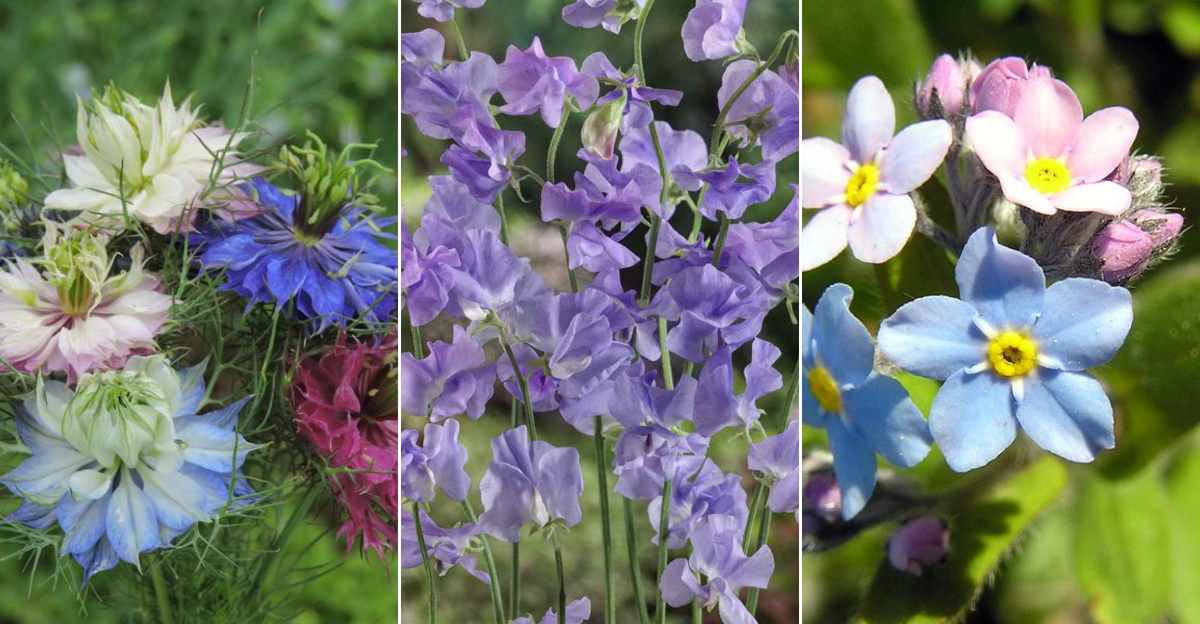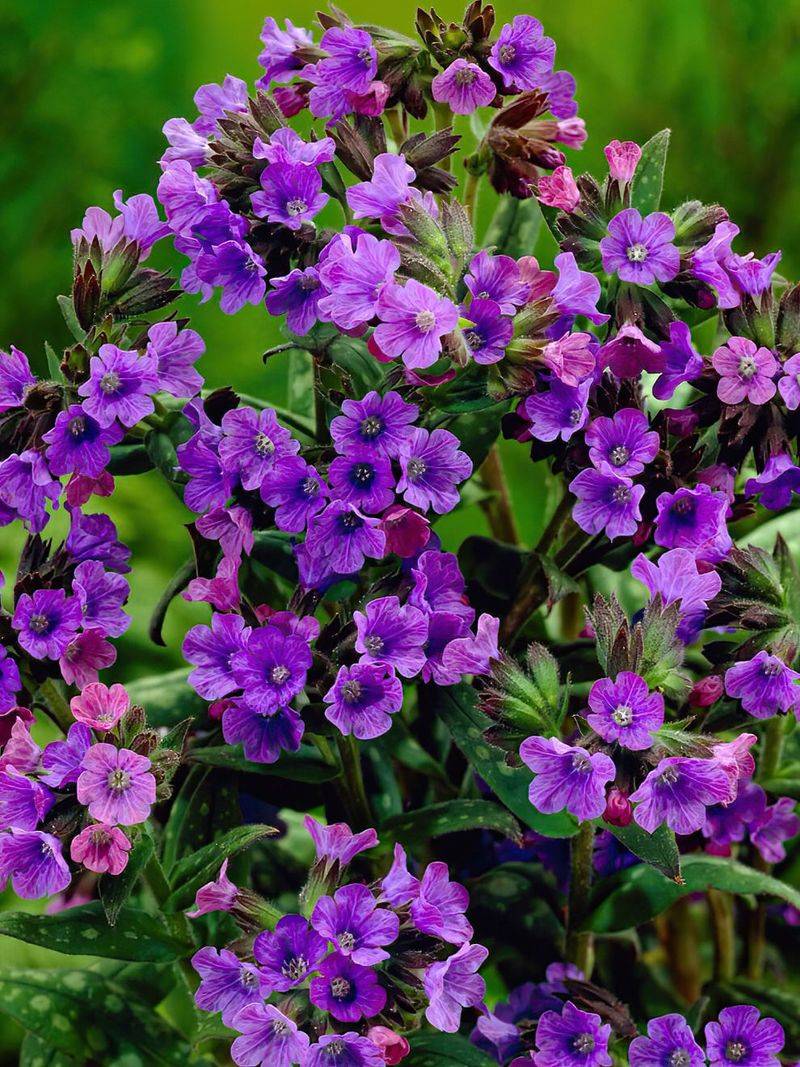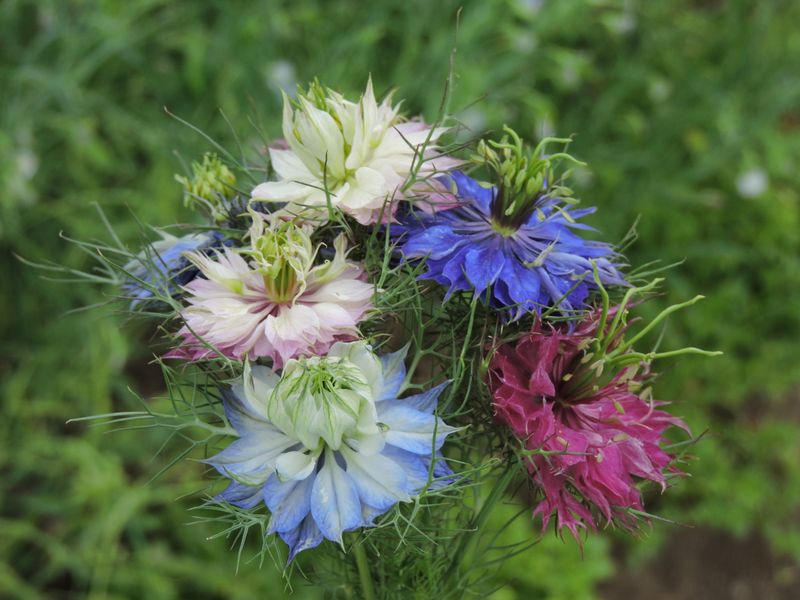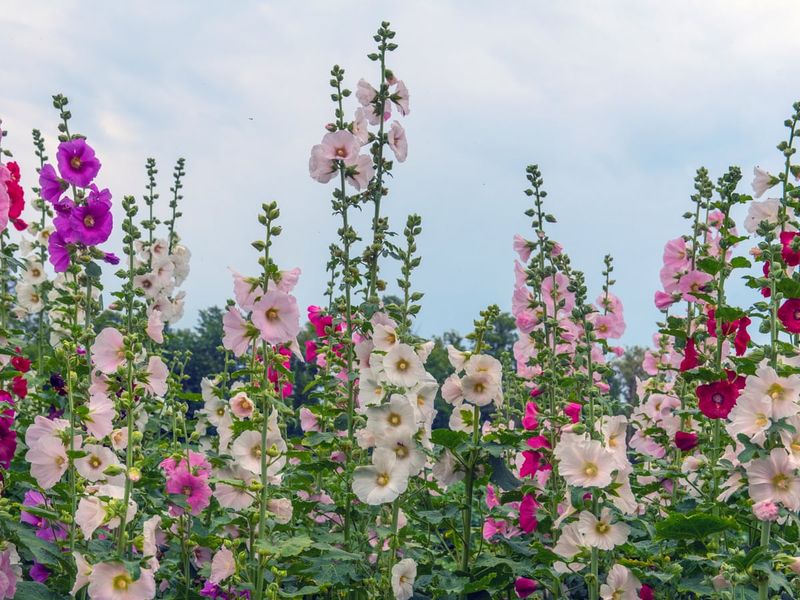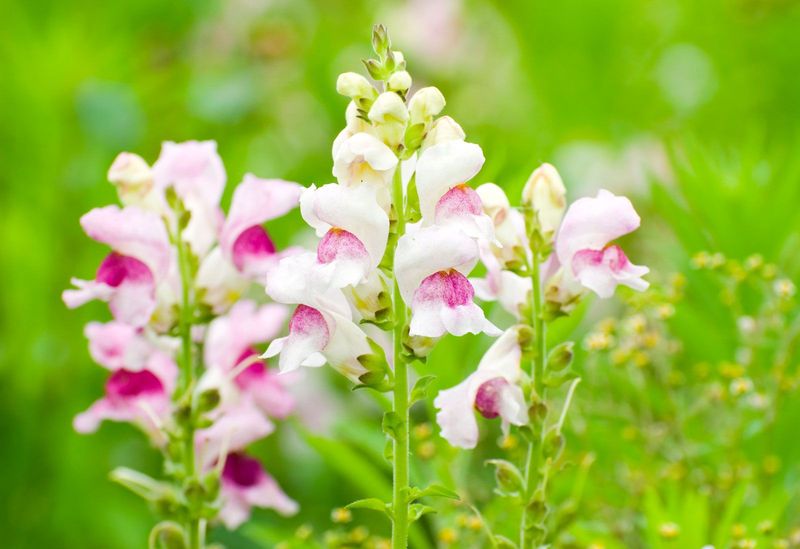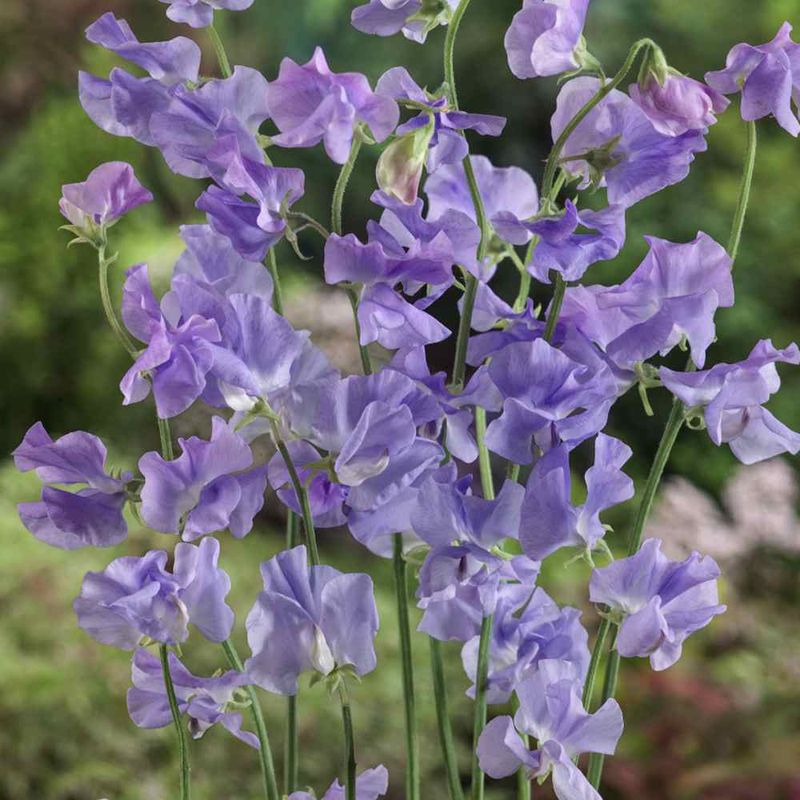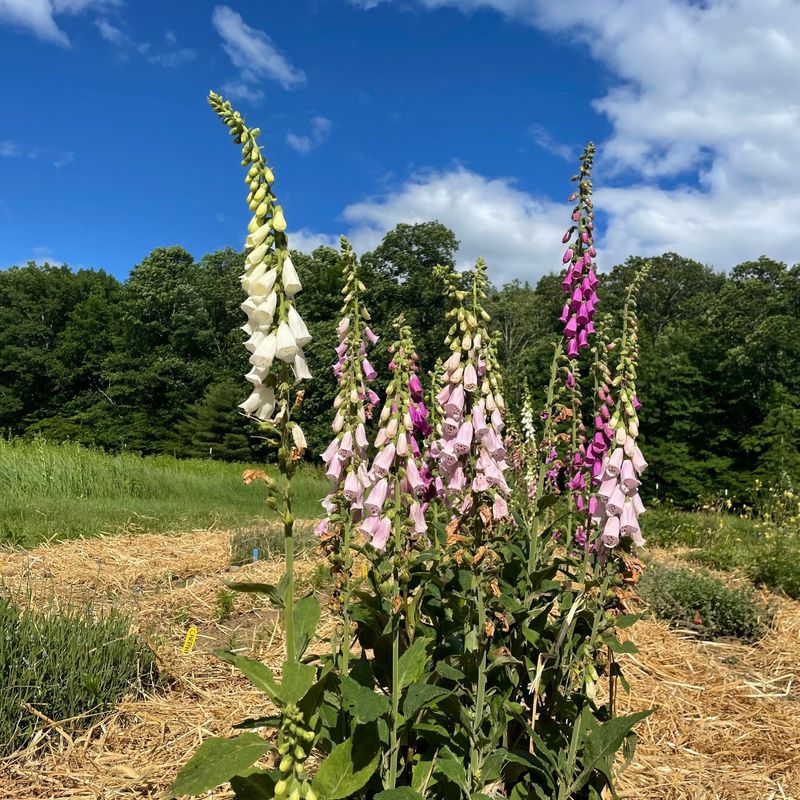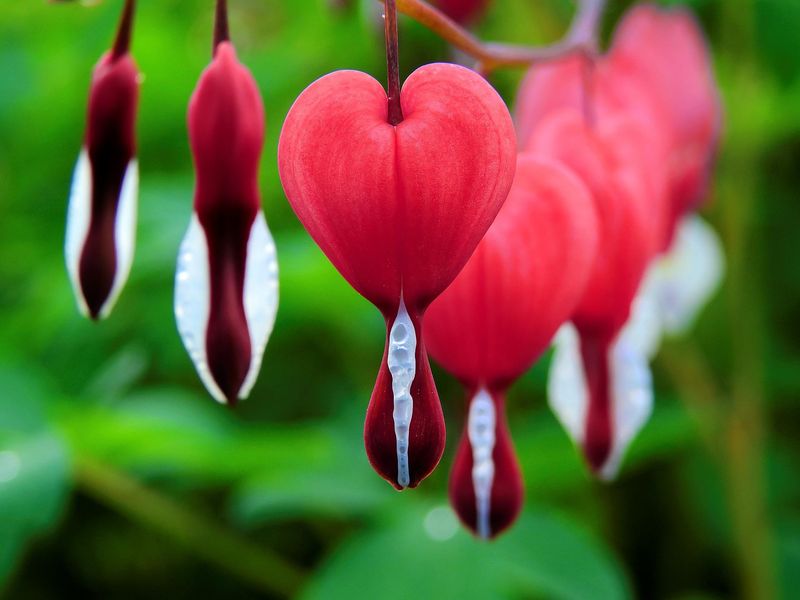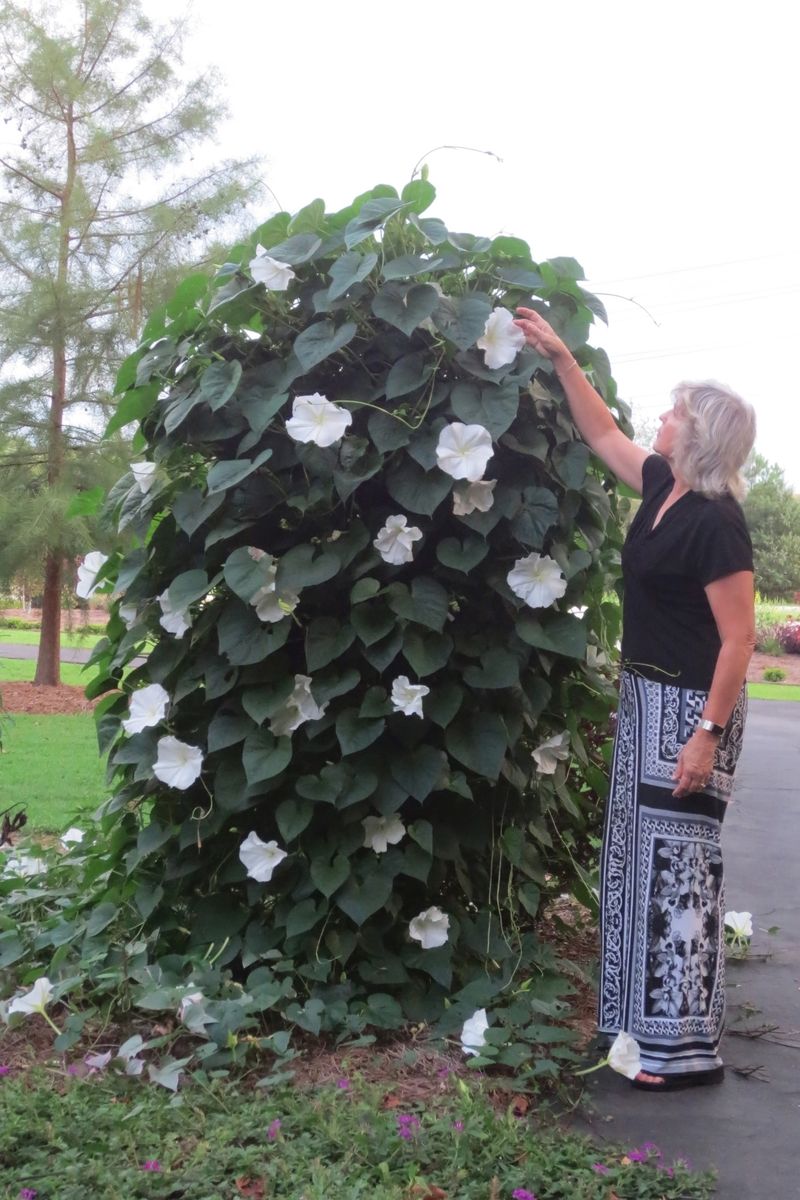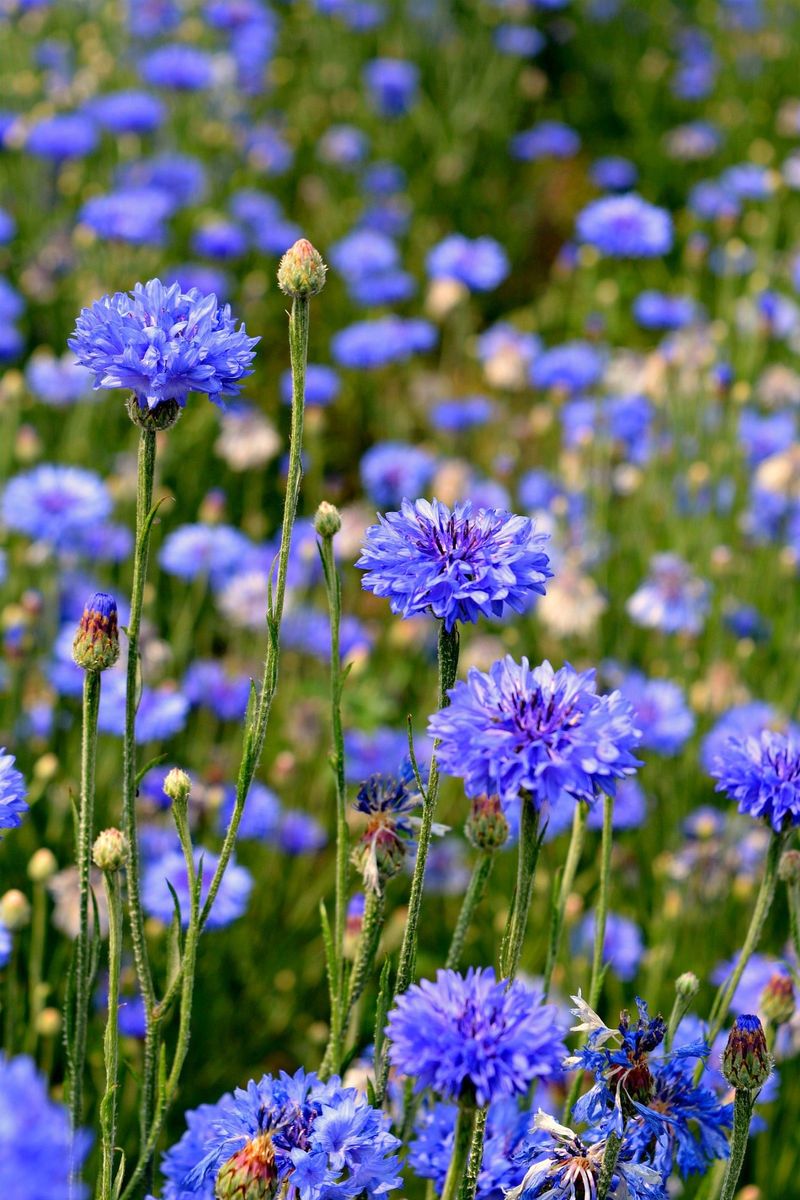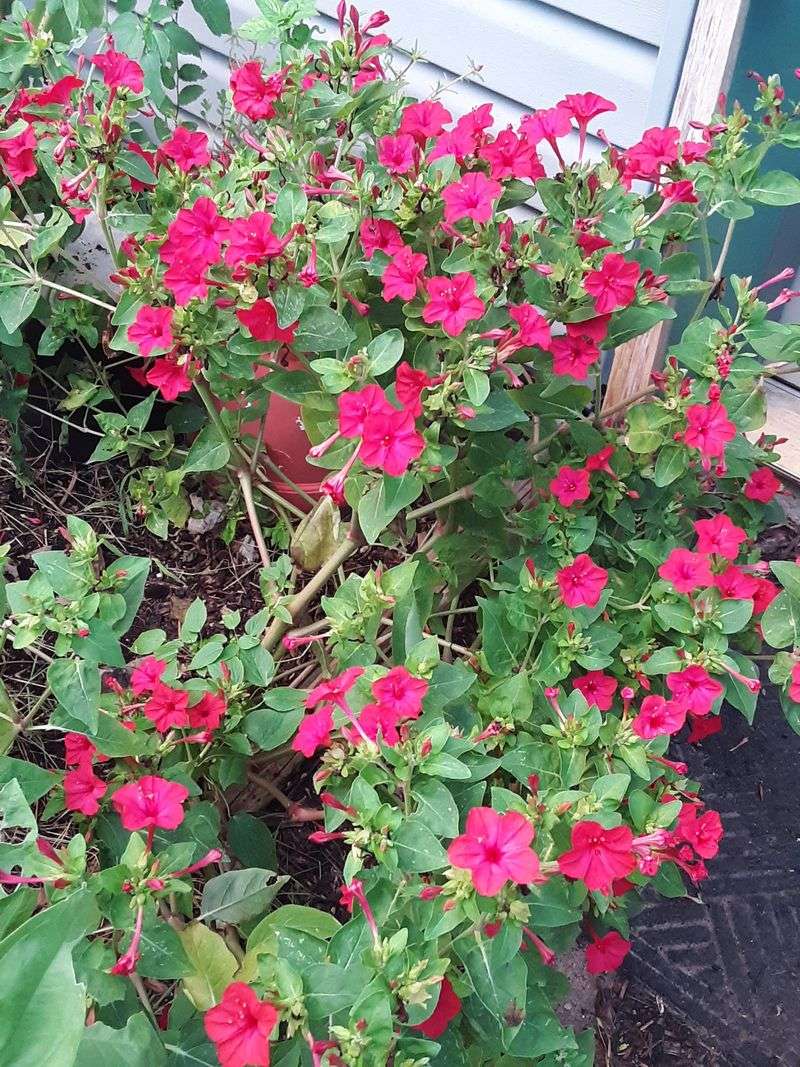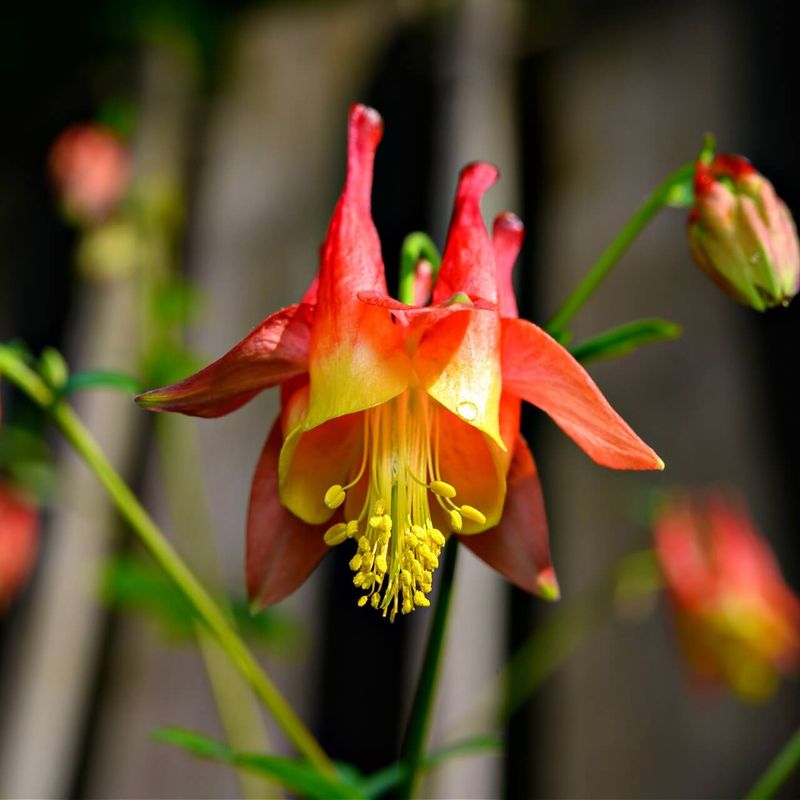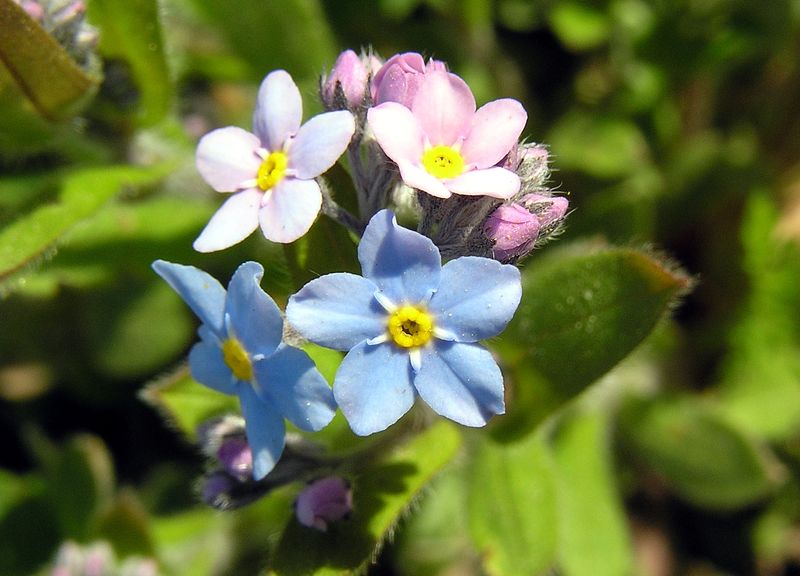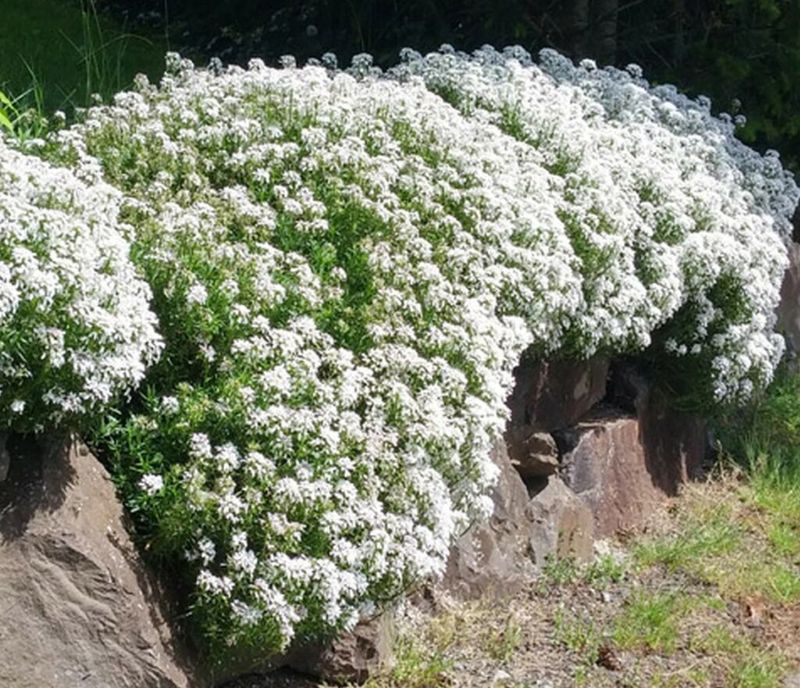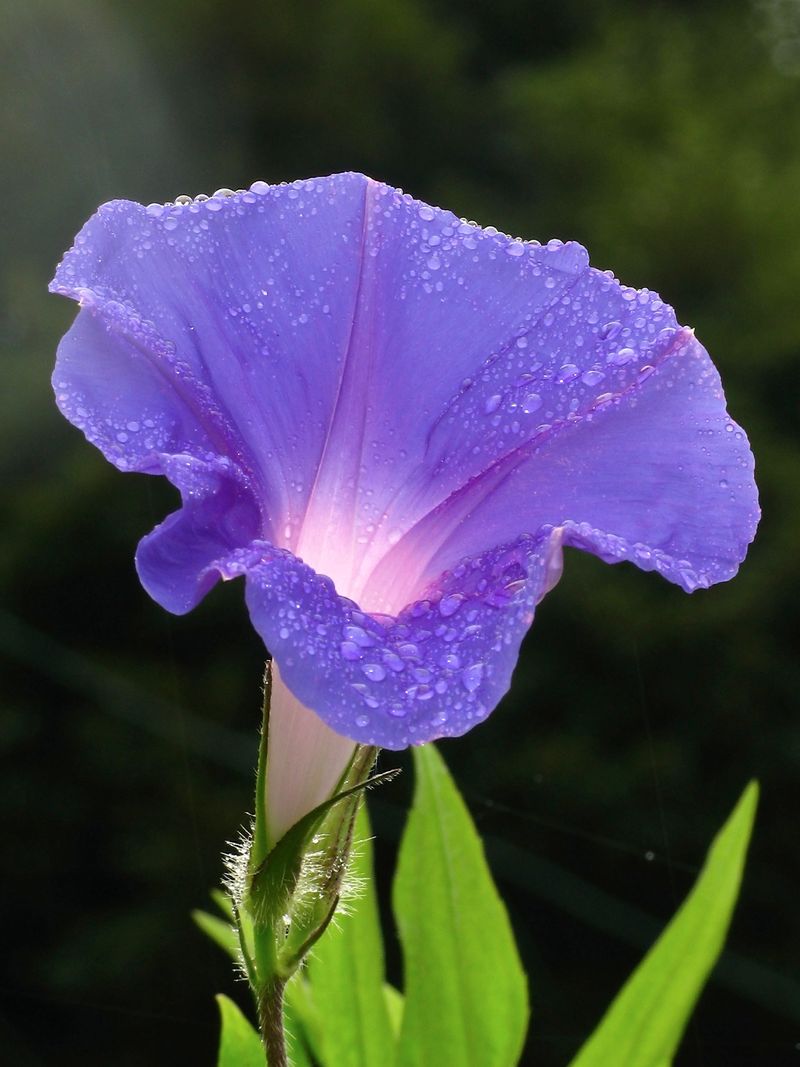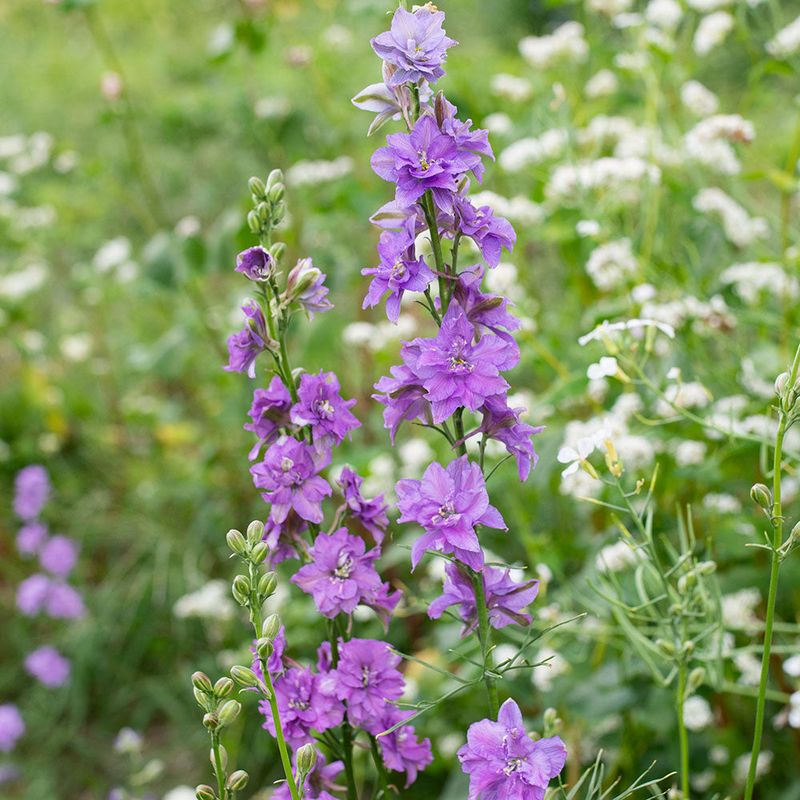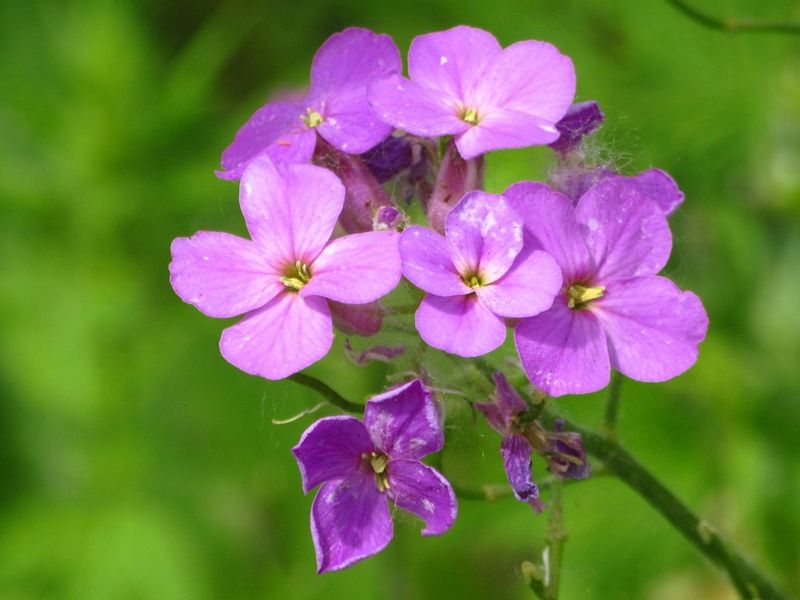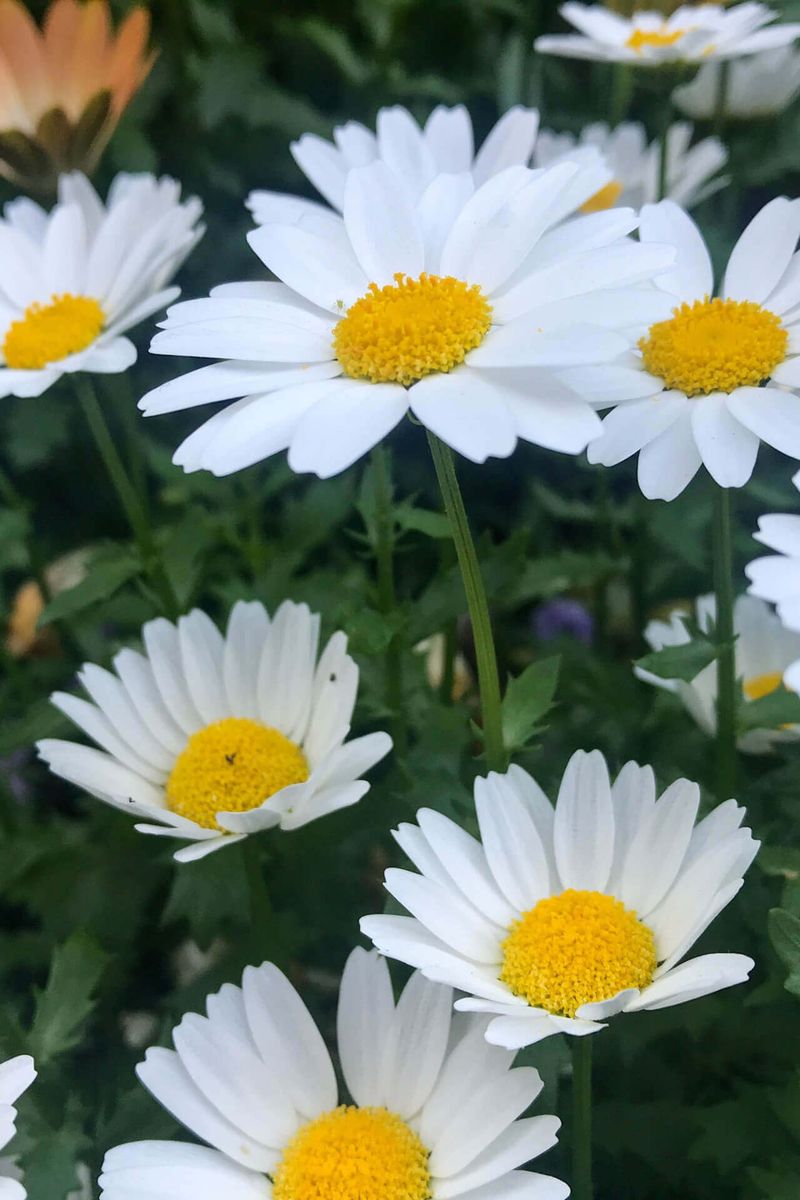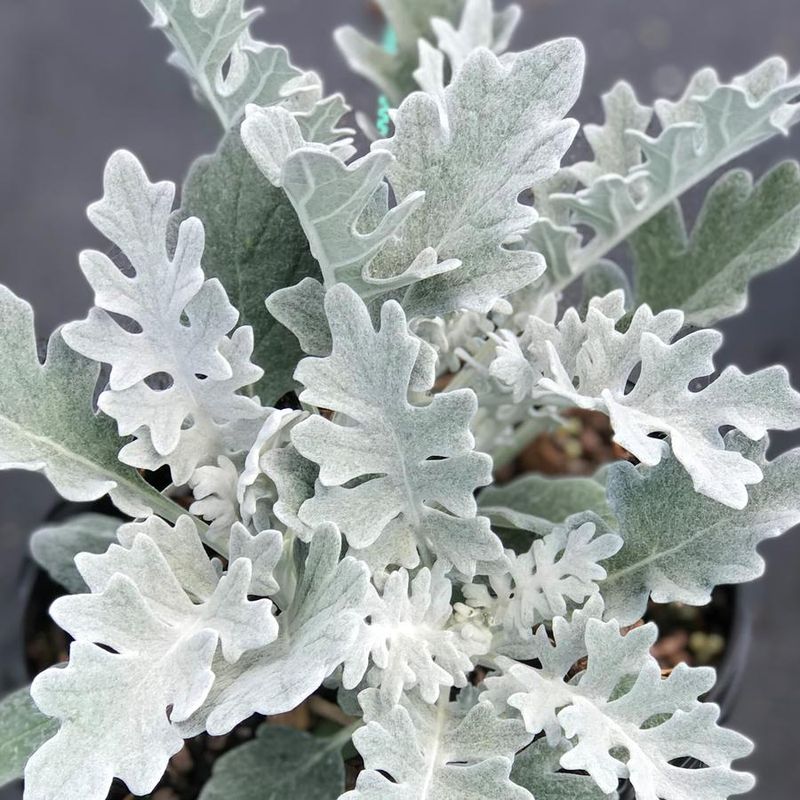Discover the charm of bygone eras with our selection of 18 garden plants that were once the pride of your great-grandmother’s garden.
These plants, rich with history and unique beauty, have sadly fallen out of modern gardening favor.
We aim to rekindle the love for these forgotten gems, celebrating their timeless appeal and historical significance. Explore each plant’s unique characteristics, historical uses, and why they deserve a comeback in today’s gardens.
1. Lungwort
Lungwort’s name might not be the most appealing, yet its beauty is undeniable. This plant thrives in shaded gardens, where its speckled leaves add visual interest.
Your great-grandmother likely admired its early spring blooms, which transition from pink to a striking blue. Lungwort isn’t just ornamental; historically, it was believed to have medicinal properties, especially for lung ailments.
This resilient perennial loves moist, well-drained soil and provides excellent ground cover. Embrace lungwort in your garden for a touch of old-world charm and its practical benefits.
2. Love-in-a-Mist
Love-in-a-Mist, also known as Nigella, graced many cottage gardens with its delicate blue petals enveloped in feathery foliage. The charming seed pods add intrigue long after the flowers fade.
This easy-to-grow annual blooms in early summer, self-seeding for effortless repeat displays. It symbolizes harmony and tranquility, perfect for vintage-inspired gardens.
Historically, its seeds were used as a spice or in traditional medicine. Love-in-a-Mist adds whimsy and historical depth to modern gardens, allowing gardeners to connect with past generations.
3. Hollyhock
Hollyhocks were a staple in traditional gardens, towering with their lush vertical blooms. These biennials bring dramatic color to any backdrop.
They can grow over six feet tall, flourishing in sunny spots with well-drained soil. Hollyhocks were often planted along fences, adding height and structure.
Their large, cheerful flowers attracted pollinators like bees and butterflies, enriching the garden’s ecosystem. Reintroduce hollyhocks into your garden for a nod to their heritage and the vibrant life they bring.
4. Snapdragon
Snapdragons, with their playful dragon-shaped flowers, are a delightful addition to any garden. Their wide range of colors and heights make them versatile for borders or containers.
In your great-grandmother’s time, children would delight in ‘snapping’ open the flowers’ ‘jaws.’
Blooming from spring through fall, snapdragons prefer sunny locations with rich soil. They’re excellent for cutting gardens, providing cheerful bouquets. Rediscover snapdragons to bring playful nostalgia and vibrant color to your landscape.
5. Sweet Pea
Sweet peas are beloved for their intoxicating fragrance and delicate blooms. They once adorned many a garden trellis, prized for their pastel hues.
These climbing annuals thrive in cool climates, needing support as they reach towards the sun. Sweet peas were often used in bouquets, their scent reminiscent of soft spring breezes.
While they require regular watering and a bit of care, their beauty and aroma are well worth the effort. Reintroduce sweet peas to infuse your garden with their delightful perfume and grace.
6. Foxglove
Foxgloves, with their towering spikes of tubular flowers, bring elegance and vertical interest to any garden. Often found in woodland or cottage settings, they thrive in partial shade.
These biennials can reach heights up to six feet, attracting hummingbirds and bees. Historically, foxgloves were used in heart medications.
Exercise caution, as all parts of the plant are toxic if ingested. Despite this, their beauty is unmatched, making them a worthwhile addition for experienced gardeners seeking a touch of nostalgia.
7. Bleeding Heart
Bleeding hearts captivate with their romantic, heart-shaped flowers dangling from arching stems. These perennials thrive in shade, adding elegance to woodland gardens.
Their unique blooms appear in late spring, a favorite in Victorian gardens for their sentimental appearance. They prefer moist, well-drained soil and cool environments.
Despite their fleeting presence, bleeding hearts are cherished for their beauty and nostalgic charm. Reintroduce them to enjoy a living piece of horticultural history.
8. Moonflower
Moonflowers enchant with their large, fragrant blossoms that open at dusk, making them perfect for night gardens. These climbing vines add magic to any setting.
Your great-grandmother might have enjoyed their evening blooms, which attract night-flying pollinators like moths. Moonflowers thrive in warm climates with ample sun.
While they require patience to establish, the reward is their stunning nighttime display. Grow moonflowers to experience their ethereal beauty and historical allure.
9. Bachelors Button
Bachelor’s buttons, or cornflowers, are known for their striking blue hue. Traditionally found in wildflower meadows, they bring a splash of color to any garden.
These easy-to-grow annuals bloom from late spring to early summer, self-seeding for successive years. They symbolize love and good fortune, ideal for rustic and vintage gardens.
Encourage their growth in sunny, well-drained areas for a carefree, meadow-inspired look. Reintroduce bachelor’s buttons to celebrate their cheerful simplicity and historical roots.
10. Four o’Clock
Four o’clocks, named for their unique blooming time, bring vibrant color to late afternoon gardens. These bushy perennials are known for their diverse hues.
They thrive in sunny areas, blooming from summer to fall. Historically, their roots were used for dyeing textiles.
Easy to grow and maintain, four o’clocks are perfect for adding an unexpected burst of color. Plant them for their cheerful blooms and connection to gardening traditions.
11. Columbine
Columbines, with their distinctive spurred petals, add elegance to any garden setting. These perennials favor rocky or woodland environments.
Blooming in late spring, they attract hummingbirds and butterflies, enhancing the garden’s wildlife population. Historically, columbines were associated with wisdom and strength.
They prefer well-drained soil and partial shade, requiring minimal care. Grow columbines to enjoy their historical allure and delicate beauty.
12. Forget-Me-Not
Forget-me-nots, with their tiny blue blossoms, have long been symbols of remembrance and love. These biennials thrive in moist, shaded areas, perfect for borders.
In your great-grandmother’s garden, they often filled shady corners with their cheerful presence. They bloom in early spring, creating a carpet of color.
Historically, they were given as tokens of love and friendship. Plant forget-me-nots to honor their sentimental history and understated beauty.
13. Candytuft
Candytuft, known for its pure white blossoms, is a charming addition to rock gardens and borders. These perennials bloom in spring, creating a sea of white.
They thrive in full sun and well-drained soil, attracting butterflies and beneficial insects. Historically, candytufts were used in medicinal remedies.
Their low-growing habit makes them ideal for edging paths or filling sunny spots. Reintroduce candytuft to your garden for its classic beauty and historic charm.
14. Morning Glory
Morning glories captivate with their trumpet-shaped blooms that unfurl each morning. These fast-growing vines are perfect for fences or trellises.
They flourish in sunny locations, providing a burst of color from summer to fall. Historically, they were believed to bring good fortune and health.
Their vibrant flowers attract pollinators, enriching the garden ecosystem. Introduce morning glories to experience their cheerful presence and historical significance.
15. Larkspur
Larkspur, with its tall spikes of colorful blooms, adds vertical drama to any garden. These annuals are easy to grow, thriving in sunny, well-drained areas.
They bloom in early summer, attracting bees and butterflies. Larkspur has historical ties to protection and love.
Ideal for borders or cut flower gardens, they require minimal care. Grow larkspur to enjoy its historical depth and vibrant presence.
16. Dame’s Rocket
Dame’s rocket, with its fragrant lavender blooms, was a favorite in old-fashioned gardens. These biennials thrive in sunny or partially shaded areas.
Blooming in late spring, they attract pollinators with their sweet scent. Historically, dame’s rocket was used in herbal remedies for digestive issues.
Easy to grow, they add a touch of vintage elegance. Reintroduce dame’s rocket for its fragrance and historical charm.
17. Shasta Daisy
Shasta daisies, with their cheerful white and yellow blooms, are a staple of classic gardens. These perennials prefer sunny spots with well-drained soil.
Blooming from early summer to fall, they bring a bright, clean look. Shasta daisies were often used in bouquets and floral arrangements.
Their simplicity and ease of care make them a timeless choice. Add Shasta daisies to your garden for their enduring beauty and nostalgic appeal.
18. Dusty Miller
Dusty miller is known for its silvery foliage, providing a striking contrast in any garden. Often used as an edging plant, it thrives in sunny, well-drained areas.
This hardy perennial can endure drought, making it a low-maintenance option. In the past, it was valued for its ability to accentuate colorful blooms.
Its unique texture and color make dusty miller a versatile addition. Incorporate it into your garden for its historical value and visual appeal.
